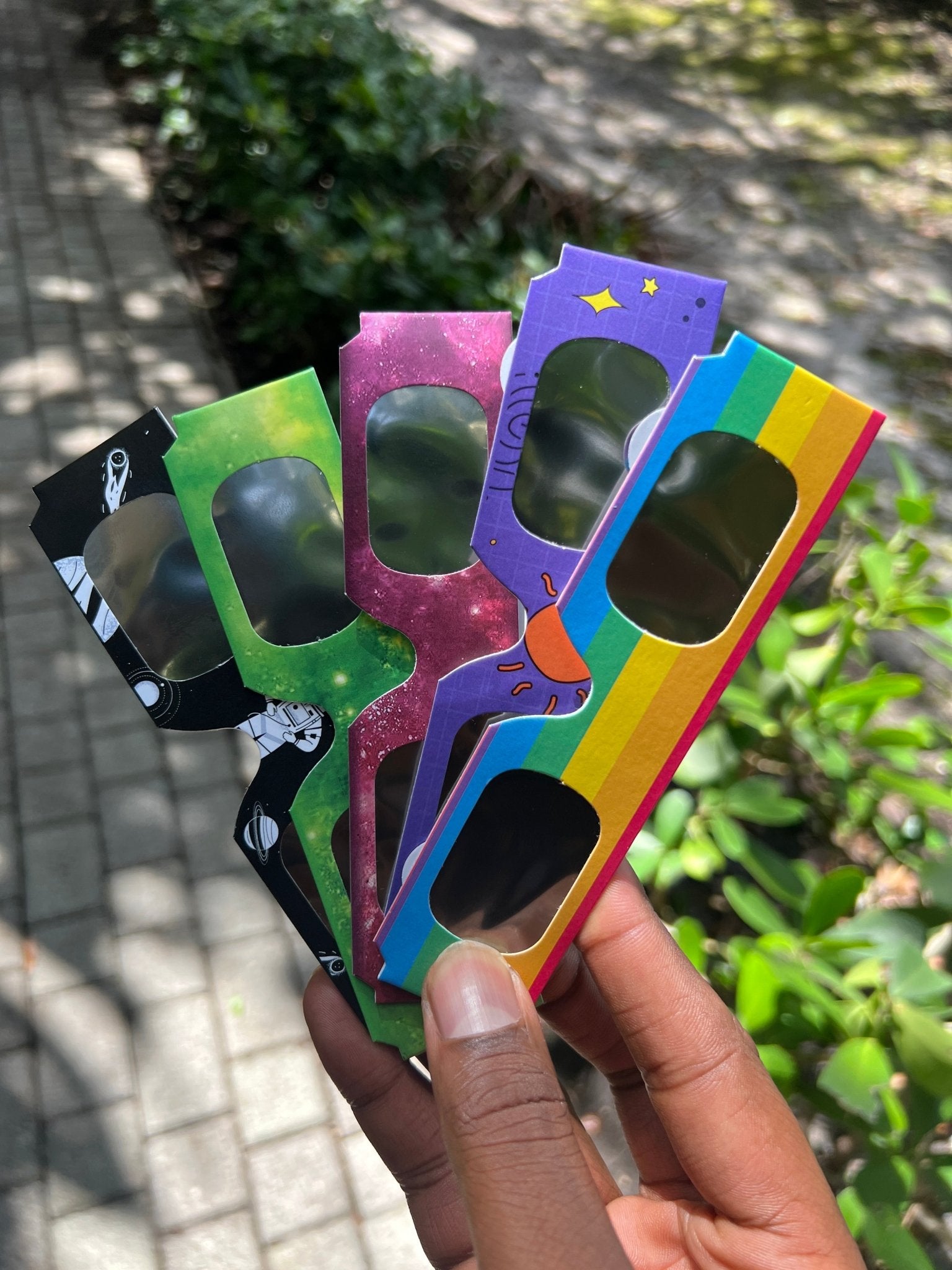Eclipse Glasses: A Story of Celestial Style
Ah, the Sun. It’s that big, fiery ball in the sky that warms our faces on summer days and provides the daylight we so often take for granted. Most of us don't spend much time looking directly at the Sun, and for good reason. It's blindingly bright, and staring at it is a one-way ticket to Eyestrain City (not a vacation spot I'd recommend).
But every now and then, something magical happens: a solar eclipse. This is when the Moon dances between the Earth and the Sun, casting a shadow that temporarily turns day into night. It's nature's theater at its finest. And, naturally, humans being the curious creatures we are, want front-row seats to this spectacular show.
Here's the catch, though: watching a solar eclipse with the naked eye is a major no-no. Just as with the regular Sun, staring at an eclipse can cause serious eye damage. But fear not, because enterprising humans came up with a nifty solution: eclipse glasses.
Once Upon a Time...
Eclipse glasses weren't invented just because someone thought they’d look stylish in a pair. The need arose from understanding the risks of observing the Sun directly. As early as ancient times, people were aware that staring at the Sun wasn't exactly a great idea. They didn’t have the scientific explanations we have now, but they noticed the painful and damaging effects. As our understanding of optics and the mechanics of the eye developed, the need for protective eyewear became more evident.
What’s the Big Deal?
The Sun emits powerful ultraviolet (UV) and infrared (IR) radiation. This radiation can damage the cells in our eyes, particularly in the retina. While the front part of our eyes can heal from solar exposure over time, the retinas? Not so much. Damage to them can be permanent. Now, the reason we don’t often harm our eyes on a regular sunny day is that our natural instinct is to squint or look away from something so bright. However, during an eclipse, the Sun's brightness can be deceptive, leading folks to feel it's safe to stare. Spoiler alert: it's not.
The Birth of Eclipse Glasses
Historically, people used a variety of makeshift methods to view eclipses. There were pinhole projectors, smoked glass, and even welder’s glasses. But these methods had their drawbacks. Smoked glass, for instance, wasn't consistent in its filtering abilities. You might think you're safe, but a thin or unevenly smoked piece could still let harmful rays through.
By the 20th century, as the study of astronomy became more widespread and public events were organized around solar eclipses, the need for safe viewing methods became more pressing. This led to the development of specialized solar filters that could be mounted on telescopes.
However, not everyone had a telescope. For the everyday Joe and Jane who just wanted a peek at the cosmic dance without going blind, a simpler solution was needed. That’s when eclipse glasses, or solar viewers, came into the picture.
Made from a special material that filters out the harmful ultraviolet and infrared rays, these glasses made it safe to look directly at the Sun. The material, often made of black polymer or a silvered Mylar, drastically reduces the sunlight's intensity, allowing only a minuscule fraction of it to reach the eyes.
The Rise of the Stylish Specs
Eclipse glasses might not win any high-fashion awards (although, who knows? Fashion can be weird!), but they've become a staple for eclipse chasers and casual observers alike. In recent years, especially with the Great American Eclipse of 2017, there was a massive demand for these glasses. This led to a surge in creativity. There were glasses with artsy designs, some with educational information printed on them, and even collectible versions.
Beware of the Fakes
Like with any popular product, there's always someone trying to make a quick buck. Knock-off eclipse glasses started appearing on the market, posing a significant danger to unsuspecting users. It's crucial to ensure that the glasses adhere to international safety standards and are sourced from reputable vendors. Your eyesight is priceless, after all.
In Conclusion...
Eclipse glasses are one of those brilliantly simple solutions to a very real problem. They're a testament to human ingenuity and our insatiable curiosity. We want to witness the wonders of the universe, but we also don't want to go blind in the process. With these snazzy specs, we can safely indulge in one of nature's most awe-inspiring events.
Next time there’s an eclipse headed your way, grab a pair, invite some friends over, and host a celestial viewing party. Just remember: safety first, oohs and aahs second. And who knows, maybe one day they *will* become a high-fashion statement!



Share:
The Ring of Fire
How to Use Eclipse Glasses for Safe and Fun Viewing of Eclipses